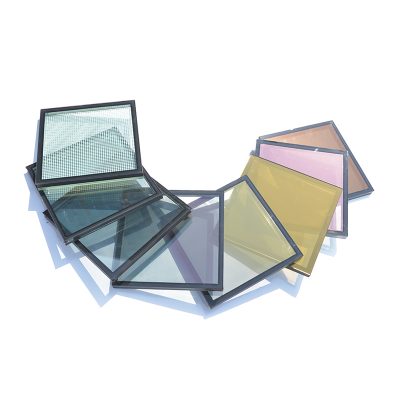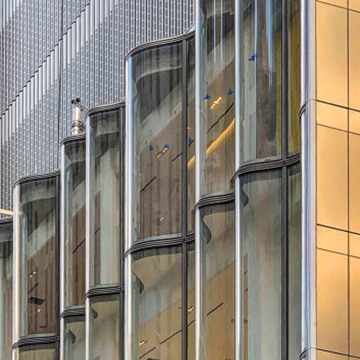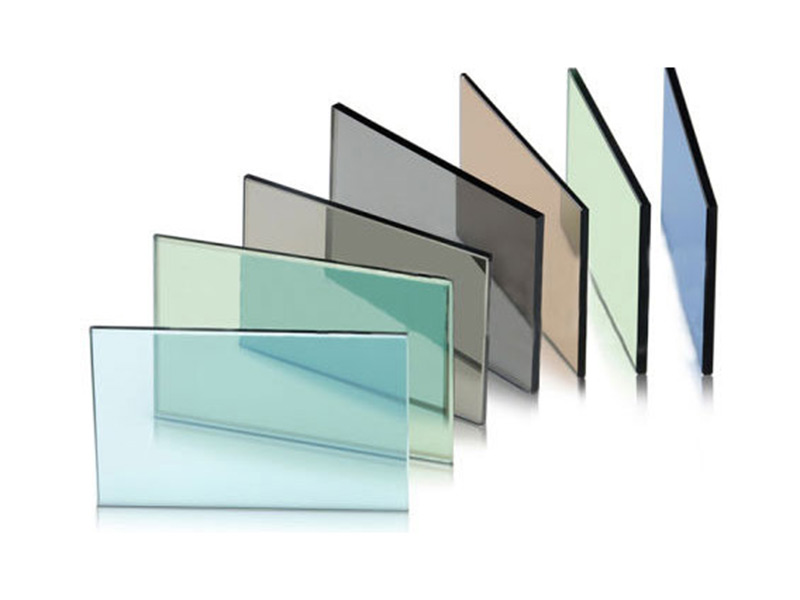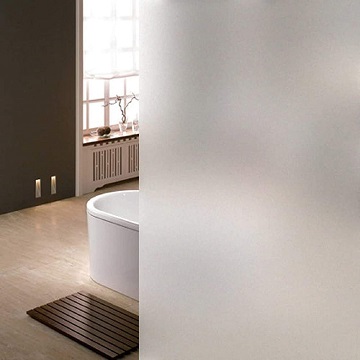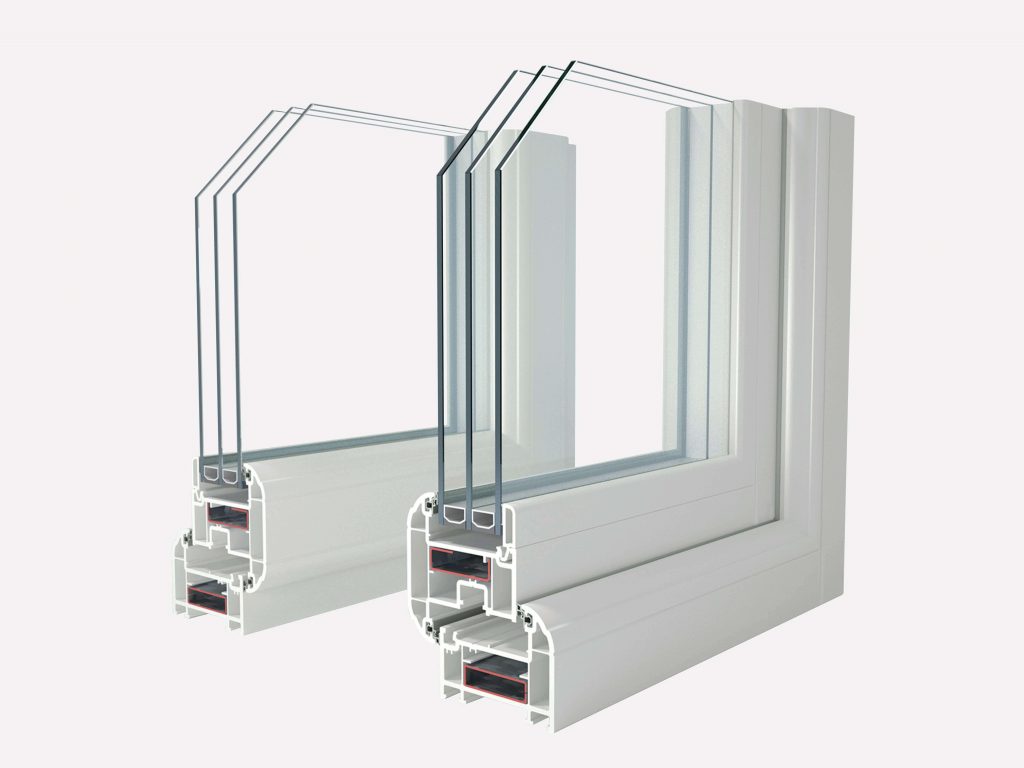Bending and tempering of architectural glass goes horizontal
During the past 15 years tempering of bent glass has mainly changed to horizontal methods.
Large series for the automotive and furniture industries are today made almost without exception on horizontal tempering machines. Smaller runs for special vehicle manufacturers and the construction industry are still made on older, vertical machines, but with developments in batch bending and tempering technology, these sectors are also increasingly switching to horizontal tempering.
Tempering that uses a glass bending furnace gives unbeatable advantages in the production of large pieces of architectural glass with high optical quality requirements.
The bending and tempering process creates the properties desired for glass, such as strength, using controlled heat processing. Heating the glass to 615-650 ºC, followed by rapid cooling, creates residual compressive stress on the surface of the glass and a corresponding residual tensile stress in the interior. The resulting stress balance gives glass the desired properties. Tempered, bent glass withstands mechanical strain 4-5 times better than bent annealed glass. This load-bearing ability makes tempered glass suitable for many places that require mechanical strength. Tempered bent glass can also withstand much greater variations in temperature than normal glass. This capability makes bent tempered glass more suitable for facades than laminated glass, for example. Another benefit is increased safety. Tempered glass shatters into small pebble-like pieces rather than larger sharp pieces.
Tempered, bent glass can be further upgraded, by laminating or building insulated glass units, for example. Silk screen printing gives added value and can be combined with bent tempered glass. All pyrolytically coated (hardcoat) glasses can be bent and tempered. Some soft coated glasses can also be bent and tempered.
Bending and tempering furnaces can also be used to make heat strengthened glass. Heat strengthened glass is not as strong as tempered glass, but it has other properties that make it more suitable in certain usage.
Whatever the method, the bending and tempering process always consists of the following stages:
a) loading (in moulds or on a conveyor)
b) preheating and heating (620-640ºC)
c) bending to the required form
d) tempering and chilling
e) unloading
The glass is loaded onto a roller conveyor or, if bending takes place inside the furnace, into a mold or tooling system.
In the furnace the glass is heated sufficiently so that it can be bent and tempered (615-650 ºC). In tempering machines where bending takes place in the furnace, the glass is heated on the mold or compound tooling system and can then be bent in the furnace. In most cases electric heating is used, so most of the heat energy is transferred to the glass by radiation.
With the roller hearth furnace, bending takes place in a separate bending section, and in practice the glass needs to be overheated to compensate for the cooling that takes place during bending. On the other hand, bending outside the furnace makes it possible to build complex adjustable molds
Rapid cooling (tempering) follows bending, and this creates the desired tension in the glass. Air is blown at a chosen pressure onto the surface of the glass through nozzles, so that the glass cools down in the required manner. To ensure even cooling, the glass oscillates between the nozzles during tempering. The speed of cooling, in other words the pressure, is chosen mainly according to the thickness of the glass. After tempering, once the temperature of the glass has fallen sufficiently, the final cooling can take place at full pressure.
Following cooling the glass is taken to the unloading area, in the mold or on the conveyor, depending on the type of machine.
Period of change in the use of bent, tempered architectural glass
Rather little use is still made of bent tempered glass in construction, and what is used is mainly produced on vertical tempering machines. This method has its weaknesses, however, and these machines will in the near future be replaced by new horizontal machines. Since even in the future roller hearth machines will be financially viable mainly for making large series, it will be necessary in smaller runs, in places that require good optical quality (facades, large display windows etc) to use bending and tempering machines.
The use of bent tempered glass is however increasing rapidly. Increasing the availability of the glass and development of related items and systems (frames, bent insulating glass, glass with bolted on fittings) will make this option even more competitive. The work on standards is advancing all the time; draft and factory standards already exist for bent glass.
In many cases in the past tempered glass was replaced by laminated, because it was much more readily available. But the availability of bent tempered glass is constantly improving. On the other hand, tempering and laminating are not mutually exclusive techniques; instead they rather complement each other. There are places where it is necessary to use tempered glass (with bolted structures, for example), and places that require laminating (eg. skylights). An increasing number of structures are being specified that require tempered and heat strengthened glass that is laminated.
Large items of tempered architectural glass have been available from established companies supplying bent architectural glass, since they have tried to retain their markets by offering a full range of glass: bent annealed, bent laminated, bent tempered and combinations. A second group that is asked to supply bent architectural glass is companies that temper flat architectural glass; these are also increasingly selling the full range of glass, to ensure they win orders.
Supplier of Architectural Glass In China:
Wallkingdon Glass offers not only one of the broadest selections of architectural, decorative, and specialty glass, but we also offer services that allow our clients to do more with glass. If you want to get high quality glass and the cost effective solutions while keeping quality to highest level, send an email to enquiry@wallkingdonglass.com, we will have the valuable input and creativity of glass design experts to help you.


